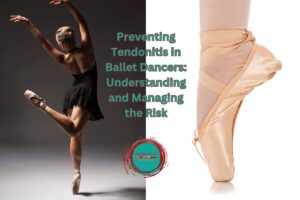
This article delves deep into the world of wrist fractures, specifically focusing on the nuances of distal radius fracture types. Fractures of the distal radius are among the most common injuries encountered in emergency rooms worldwide. Given the prevalence of these injuries and the intricate anatomy and function of the wrist, understanding the classifications, symptoms, and treatment options is crucial for anyone at risk. Whether you’re an athlete, an active individual, or simply keen on bone health, this comprehensive guide offers valuable insights into diagnosing, managing, and recovering from a distal radial fracture.
Article Outline
- Understanding Distal Radius Fractures
- Symptoms of a Distal Radius Fracture: What to Look For
- The Causes Behind Distal Radius Fractures
- Classification Systems for Distal Radius Fractures
- Most Common Distal Radius fracture types
- Examining the Treatment Options
- The Role of Closed Reduction in Fracture Management
- Fixation Techniques: Ensuring Stability
- The Significance of Wrist Function Post-Fracture
- Prevention Strategies: Reducing the Risk of Fracture
- Rehabilitation and Recovery: Regaining Full Function
Understanding Distal Radius Fractures
Distal radius fractures, commonly known as wrist fractures, occur near the wrist joint where the larger of the two forearm bones (the radius) meets the hand. These fractures can vary greatly in complexity, from simple breaks that may heal with minimal intervention to complex fractures that require surgical fixation. Understanding the nature of these fractures, including the distinction between intra-articular (involving the joint) and extra-articular (outside the joint) fractures, is the first step in effective management.
Symptoms of a Distal Radius Fracture: What to Look For
Immediate pain, swelling, and a visible deformity near the wrist are hallmark symptoms of a distal radius fracture. Patients often report a history of falling on an outstretched hand, leading to the classic presentation of this injury. It’s crucial to recognise these symptoms early for timely intervention, which can significantly influence the outcome and wrist function post-recovery.
The Causes Behind Distal Radius Fractures
A distal radius fracture is typically caused by a fall onto an outstretched hand, absorbing the impact through the wrist. This mechanism of injury is common in sports, everyday accidents, and, notably, in older individuals where bone fragility plays a significant role. Understanding these causes is essential for both prevention and appropriate treatment planning.
Classification Systems for Distal Radius Fractures
Classification systems, such as the Frykman classification, play a crucial role in guiding treatment. The Frykman System has been more recently succeeded by the AO/ATO Classification System. These systems consider factors like the presence of intra-articular involvement, displacement, and association with ulnar fractures. Our Advanced Specialist Hand Therapy team’s thorough understanding of these classifications helps them to tailor treatment to the specific type of fracture, ensuring optimal outcomes.
Most Common Distal Radius Fracture Types:
- Colles Fracture
- A Colles’ fracture is one of the most common types of distal radius fractures, characterised by a backward displacement of the distal fragment and a radial shift of the wrist and hand. It typically occurs from a fall onto an outstretched hand with the wrist in extension. The classic presentation includes a “dinner fork” deformity, where the back of the wrist has a prominent bump. Colles’ fractures are more common in older individuals with osteoporotic bones and are often treated with casting or surgical fixation depending on the severity and displacement of the fracture.
- Smith Fracture
- A Smith fracture, also known as a reverse Colles’ fracture, is a fracture of the distal radius with anterior (palmar) displacement of the wrist and distal fragment. This type of fracture typically occurs from a fall onto a flexed (bent forward) wrist, which is the opposite mechanism of a Colles’ fracture. The result is a visible deformity sometimes referred to as a “garden spade deformity.” Smith fractures are less common than Colles’ fractures and may require surgical intervention to realign the bones due to the displacement of the fracture toward the palmar side.
- Die-Punch Fracture
- A die-punch fracture refers to an impaction fracture of the lunate fossa of the distal radius, which is the part of the radius that articulates with the lunate bone of the wrist. This type of fracture typically occurs due to axial loading or compression forces transmitted through the lunate into the distal radius. Die-punch fractures are considered intra-articular because they involve the wrist joint surface and often require surgical intervention to restore joint congruity and prevent long-term complications like arthritis.
- Barton’s Fracture
- Barton’s fracture is an intra-articular fracture of the distal radius with dislocation of the radiocarpal joint. There are two types of Barton’s fractures: dorsal and volar, depending on the direction of the distal fragment displacement.
- Dorsal Barton’s Fracture: In this type, the displacement is backward (towards the back of the hand). It occurs from a fall on an extended and pronated (palm down) wrist, leading to a fracture of the dorsal rim of the radius.
- Volar Barton’s Fracture: Conversely, in a volar Barton’s fracture, the displacement is forward (towards the palm). It results from a fall onto a flexed wrist, causing a fracture of the volar (palmar) rim of the radius.
- The key difference between the two types lies in the direction of the displacement and the part of the radius that’s affected. Both types disrupt the wrist joint and often require surgical treatment to realign the bones and stabilise the joint.
- Chauffeur’s Fracture
- A Chauffeur’s fracture, also known as Hutchinson’s fracture, is a specific type of radial fracture involving the radial styloid process. It is often caused by direct trauma to the radial side of the wrist or by compressive forces through the scaphoid bone into the styloid. This fracture got its name from the era when car chauffeurs would sustain this injury from the backfire of a hand-cranked engine. Treatment varies based on the displacement and may involve casting or surgical fixation.
Examining the Treatment Options
Treatment for distal radius fractures ranges from conservative management with splinting or casting to more aggressive interventions like open reduction and internal fixation (ORIF). The choice of treatment depends on several factors, including the fracture’s severity, patient age, activity level, and the presence of comorbidities.
The Role of Closed Reduction in Fracture Management
Closed reduction is a non-surgical procedure often used for displaced fractures. It involves manually realigning the fractured bone fragments to their normal position without making an incision. This technique, followed by immobilisation in a splint or cast, is a cornerstone in the management of many distal radius fractures.
Fixation Techniques: Ensuring Stability

When a fracture is too unstable for conservative treatment, surgical fixation becomes necessary. Techniques vary from percutaneous pinning to more complex procedures like external fixation or ORIF. These methods aim to restore the anatomy of the wrist, ensuring stability and function while minimising complications.
The Significance of Wrist Function Post-Fracture
The primary goal in managing distal radius fractures is to restore wrist function to its pre-injury level. This involves not only healing the fracture but also ensuring that the wrist’s complex range of motion and strength are fully rehabilitated. The intricate balance between bone healing, joint mobility, and muscular strength is crucial for a successful recovery.
Prevention Strategies: Reducing the Risk of Fracture
Preventing distal radius fractures involves a multifaceted approach, including fall prevention strategies, especially in the elderly, and protective measures during high-risk activities. Bone health optimisation, through diet and exercise, also plays a significant role in reducing fracture risk.
Rehabilitation and Recovery: Regaining Full Function
Rehabilitation is an integral part of the recovery process, often beginning shortly after treatment. Physical therapy focuses on restoring strength, flexibility, and function, with personalised programs designed to meet each patient’s specific needs. The journey from injury to full recovery can vary widely among individuals, highlighting the importance of a patient-centred approach to rehabilitation.
Read our guide to hand therapy and therapists.
Key Takeaways
- Distal radius fractures are a common and varied group of injuries requiring tailored management strategies.
- Early recognition of symptoms and an understanding of the underlying causes are critical for effective treatment.
- Classification systems provide a framework for identifying the specific characteristics of each fracture, and guiding treatment decisions.
- Treatment options range from conservative management to surgical intervention, with the choice influenced by the fracture’s nature and patient factors.
- Rehabilitation plays a crucial role in restoring wrist function and achieving the best possible outcome post-fracture.
This comprehensive guide to distal radius fractures underscores the complexity of these injuries and the importance of individualised care. From understanding the basics to navigating treatment and recovery, the information provided offers a foundation for those affected by, or at risk of, these common fractures.
If you’d like to see one of our Advanced Hand Specialist Physiotherapists for your distal radius fracture, then you can book an appointment, or find out more about how our specialist hand therapy service can help you achieve the best possible treatment outcome.




Comments